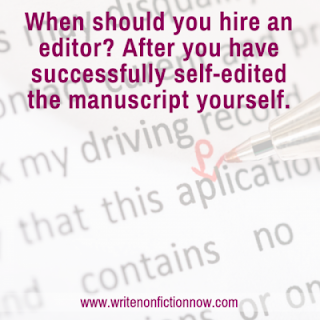Kazuo Ishiguro wrote the bulk of The Remains of the Day in four weeks. All it took was extreme dedication—and a willingness to be terrible.
In the way the sculpture or carpentry is a craft, writing is a craft. There is art, lifestyle, and romance to it. Writers don’t just jumble words on blank pages; writing is a mix of discipline, dedication, a staring into the abyss of the subconscious, and a unison with the supernatural. Like a worker of clay, writers mash words, and are themselves mashed and caked in the clay of the art.
Writing is a delicious work, but it is for the most part simply work. It’s often lonely. It’s rarely romantic. “We write to taste life twice, in the moment and in retrospect,” Anaïs Nin said.
Writing is refreshing and exciting, and it is also a public service. Writers of literature are public servants in that they use their stage not just to celebrate literature but to also put the creation of literature in its place – of mirroring the society. And it’s especially refreshing when writers at the highest levels of the field do that. One of them has been Kazuo Ishiguro, the British novelist and the latest winner of the Nobel Prize.
On Thursday, 5th October 2017 the Nobel Committee announced Ishiguro as its 2017 laureate for literature. The Committee noted in its citation, that came in part because the author, “in novels of great emotional force, has uncovered the abyss beneath our illusory sense of connection with the world.”
Almost immediately after the announcement was made, a story from The Guardian, written by Ishiguro himself and published in December of 2014, began circulating on social media. The piece is headlined, “Kazuo Ishiguro: How I Wrote The Remains of the Day in Four Weeks.” The article details how the author overcame the consensus about writing, and most importantly the haul of life’s demand, to conjure enough letters that would become Ishiguro’s most famous piece.
Due to distractions from the “first flurry of public success” that accompanied his second novel, an end seemed to have come to his “proper” work, spending a whole year fruitlessly to write the opening chapter of a book. So Ishiguro and his wife, Lorna, hatched a plan to jump-start his creativity:
I would, for a four-week period, ruthlessly clear my diary and go on what we somewhat mysteriously called a “Crash.” During the Crash, I would do nothing but write from 9 a.m. to 10:30 p.m., Monday through Saturday. I’d get one hour off for lunch and two for dinner. I’d not see, let alone answer, any mail, and would not go near the phone. No one would come to the house. Lorna, despite her own busy schedule, would for this period do my share of the cooking and housework. In this way, so we hoped, I’d not only complete more work quantitively, but reach a mental state in which my fictional world was more real to me than the actual one.
The goal, essentially, was to deliberately create an environment in which the author and his narrative might be fused into one. It was a crash. “Throughout the Crash,” Ishiguro notes, “I wrote free-hand, not caring about the style or if something I wrote in the afternoon contradicted something I’d established in the story that morning. The priority was simply to get the ideas surfacing and growing. Awful sentences, hideous dialogue, scenes that went nowhere—I let them remain and ploughed on.”
And he hooked it. Four weeks later, Ishiguro had a draft of The Remains of the Day. He tinkered with it still, yes. He added and trimmed and honed. For the most part, though, he had, in a concentrated month, completed a masterpiece. He’d spent his year of unproductivity, he notes, doing the background work of the writing—he’d read books by and about British servants, and histories, and “The Danger of Being a Gentleman”—and the Crash came at a time when Ishiguro knew what he needed to know to write what he wanted to write. All that was required was to sit down and do the work.
It’s a helpful reminder to writers of literature both serious and less so—and to anyone who might be intimidated by talk of writing’s metaphysical properties. “If you mix Jane Austen and Franz Kafka then you have Kazuo Ishiguro in a nutshell, but you have to add a little bit of Marcel Proust into the mix,” said Sara Danius, the permanent secretary of The Swedish Academy, explaining the Committee’s choice of Ishiguro. “Then you stir, but not too much, then you have his writings.”
It’s high, and accurate, praise—but it is the reward for Ishiguro’s quest for knowledge, strong spirit to make a difference, unchained mind, and stalwart dedication to link the clutters of words, dialogues and character. And it is indeed a vital imaginative breakthrough!

.jpg)













